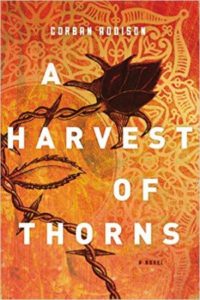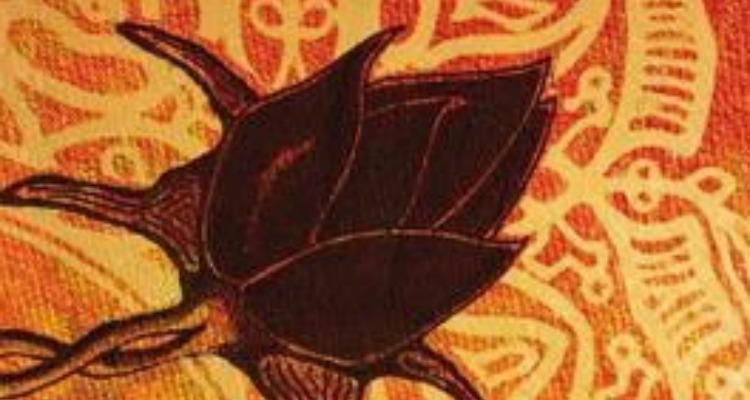Corban Addison dubs his style of fiction as “faction.” Deeply immersed in real stories, his fiction springs from truth and brings to life crisis that feels far-removed from our everyday lives. In his latest release, A Harvest of Thorns (Thomas Nelson) Corban takes an in-depth look at the fashion industry and the factory workers abroad who make cheap clothes possible in America. When you think of human rights and social justice issues, the premise of this book is probably not one that comes to mind. A Harvest of Thorns will change that.
What inspired A Harvest of Thorns?
 My novels have touched upon a lot of different topics in the field of international human rights, but in some ways A Harvest of Thorns is a return to the beginning of my publishing journey. In my first novel, A Walk Across the Sun, I wrote about sex trafficking around the world. In Harvest, I address the opposite face of the trade in human beings, forced labor and its related abuses in the global consumer economy and the fashion industry, in particular.
My novels have touched upon a lot of different topics in the field of international human rights, but in some ways A Harvest of Thorns is a return to the beginning of my publishing journey. In my first novel, A Walk Across the Sun, I wrote about sex trafficking around the world. In Harvest, I address the opposite face of the trade in human beings, forced labor and its related abuses in the global consumer economy and the fashion industry, in particular.
I’m fascinated by the fallout of globalization, by our shrinking world and widening lenses, by the human dimensions of economic forces, and by the ways that the $22 trillion global consumer empire impacts the people at the bottom of the heap who work in factories and mills and fields, harvesting the ingredients and then making the products that we in the rich world love to buy and wear. With A Harvest of Thorns, I wanted to tell a story that would probe the soul of the consumer economy, that would explore the many dimensions of corporate social responsibility, and that would leave all of us, as consumers, as business people, as investors, with a question: Now that we see what goes into our clothes, should we not, as a society, rethink our relationship to fast fashion and our obsession with cheap merchandise?
Can you describe your plot in one sentence?
A beloved American corporation with an explosive secret; a disgraced former journalist looking for redemption; a corporate executive with nothing left to lose.
Are any parts of the plot or characters pulled from real life?
 The story begins with a prologue that has generated a lot of buzz among early reviewers—a fire at an apparel factory in Dhaka, Bangladesh. It’s probably the most hard-hitting scene I’ve ever written, and I think it’s so effective because it was inspired by reality. In November, 2012, the Tazreen Fashions factory in Dhaka burned to the ground, claiming the lives of 117 workers and injuring hundreds more. I traveled to Bangladesh and met some of the women who survived that fire. I listened to their stories, and then I wove them into the prologue in a way that rings true because it is true. I was so moved by their testimony and courage that I dedicated the book to them.
The story begins with a prologue that has generated a lot of buzz among early reviewers—a fire at an apparel factory in Dhaka, Bangladesh. It’s probably the most hard-hitting scene I’ve ever written, and I think it’s so effective because it was inspired by reality. In November, 2012, the Tazreen Fashions factory in Dhaka burned to the ground, claiming the lives of 117 workers and injuring hundreds more. I traveled to Bangladesh and met some of the women who survived that fire. I listened to their stories, and then I wove them into the prologue in a way that rings true because it is true. I was so moved by their testimony and courage that I dedicated the book to them.
Who is your favorite character in the book?
I really enjoyed developing the character of Cameron Alexander, the general counsel of the multi-national retailer at the core of the story. There are so many layers in his personal story—the scion of a prominent African-American family from Boston; the Harvard educated lawyer and corporate executive; the son of a celebrated Harvard law professor who in spite of his success has never managed to escape his father’s long shadow; the best friend of the company’s CEO, a man born with a silver spoon; and a widower who blames himself for his wife’s death and wonders what to make of the rest of his life. His journey from the beginning of the book to the end was a true joy to write and to experience along with him.
What influences your writing the most?
My novels are what a South African friend once called “faction” rather than “fiction.” They are stories adapted from real life, drawn from extensive on-the-ground research, and woven into a package that enlightens as it entertains. In my research, I gather information and inspiration from many sources, but perhaps the most impactful are the stories of the people I meet on the road. In researching A Harvest of Thorns, I met with garment workers in multiple countries, with factory owners and managers, activists, lawyers, academics, journalists, and other experts to learn how it is that the clothes destined for stores my family and I shop in could be made in ways that any of us would consider inhumane. The stories I gathered heavily influenced the way the novel took shape. Wherever possible, I drew characters and plot points from my own experience. I think that makes for the best storytelling.
You infuse your stories with so much reality–what’s your process?
With all my books, I spend months doing research and interviews and developing character sketches and the basic shape of the plot. Some of that research I do in my office in Virginia. Some of it I do around the world. At some point, my work makes an inevitable transition from fact to fiction. It’s always a little mysterious how and when that happens, but as soon as it does I sit down and start writing. I try to write between 1,500 and 2,500 words a day, depending on how easily the words flow and how distracted I am by other things. I tend to overwrite, which means that the final draft of any book is usually 20% shorter than the first draft. That feels like a lot of words to waste, but one of my professors in law school taught me that the best writers are willing to leave great sentences on the cutting room floor to make their work better.
Where will your writing take you next?
I’m about 80-percent finished with a novel on the Syrian refugee crisis and its impact on the world. This past spring, I traveled the refugee route from the Greek islands to Germany. It was an amazing, affecting experience, and I’m really excited about the story that came out of it.
Find more about the novel here:


